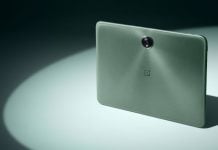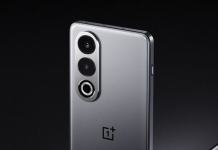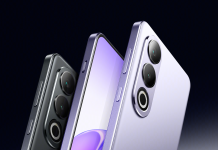A few days ago, Motorola announced two new phones – the Motorola Edge 20 and the Motorola Edge 20 Fusion – for the Indian market. The former is the more powerful model with more features and of course, a higher price tag of ₹29,999 (~$404). This is the same price as the 8+128GB version of the OnePlus Nord 2.
And if you are wondering which of these two devices deserve your money, then this post should help you make that decision.
First, let’s look at a spec-by-spec comparison.
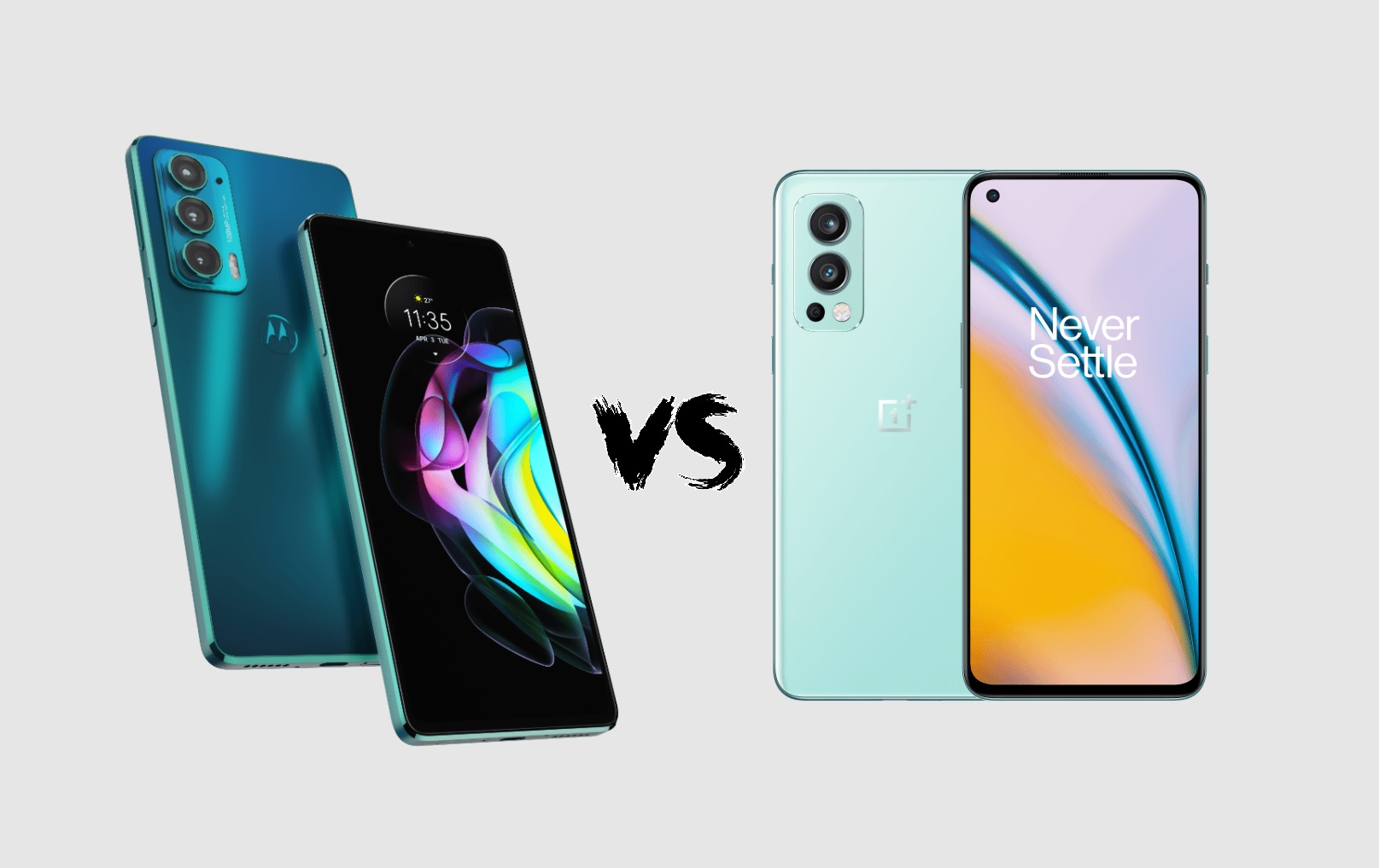
| Motorola Edge 20 | OnePlus Nord 2 | |
|---|---|---|
| Display | 6.7 inches 2460 x 1080 OLED 144Hz HDR10+ Gorilla Glass 3 | 6.43 inches 2400 x 10180 AMOLED 90Hz No HDR Gorilla Glass 5 |
| Processor | Snapdragon 778G | Dimensity 1200-AI |
| RAM | 8GB DDR4 | 8GB LPDDR4X |
| Storage | 128GB UFS 3.1 | 128GB UFS 3.1 |
| Rear cameras | 108MP f/1.9 main camera 16MP f/2.2 119° ultrawide + macro 8MP f/2.4 telephoto camera (3x optical zoom, 30x super zoom) | 50MP f/1.88 main camera with OIS 8MP f/2.25 119.7° ultrawide angle camera 2MP f/2.4 mono lens |
| Front camera | 32MP f/2.25 | 32MP f/2.45 |
| Audio Jack | No | No |
| Fingerprint Scanner | Side-mounted | Under-display |
| Battery capacity and fast charging | 4000mAh 30W TurboPower charging | 4500mAh 65W Warp Charge |
| Connectivity | Bluetooth 5.2 NFC Dual SIM Wi-Fi 6E Dual SIM 5G 11 5G bands | Bluetooth 5.2 NFC Dual SIM Wi-Fi 6 Dual SIM 5G 6 5G bands |
| Material | Aluminum alloy frame Plastic back | Plastic frame Gorilla Glass 5 back |
| Weight and Dimensions | 163 grams 163 x 76 x 6.99 millimeters | 189 grams 159.1 x 73.3 x 83 millimeters |
| Other features | IP52 rating Ready For Dedicated Google Assistant button My UX based on Android 11 | Dual stereo speakers Alert slider OxygenOS 11.3 based on Android 11 |
Design
Both phones are rocking flat displays with hole punches, albeit in different positions, and triple rear cameras stacked vertically. Both are also available in multiple colors. However, there are some pretty significant differences in the way these two phones have been made.
The Motorola Edge 20 is one of the lightest and thinnest phones in its class, weighing just 163 grams and measuring 6.9 millimeters in thickness. It also has an aluminum alloy frame, but settles for a plastic back panel. The OnePlus Nord 2 settles for a plastic frame but gets a Gorilla Glass 5 back and is heavier and thicker too, but for justifiable reasons.
Display
This is another area where both devices differ significantly. OnePlus has equipped the Nord 2 with a 6.43-inch FHD+ AMOLED display that has a 90Hz refresh rate. There is also Gorilla Glass 5 for protection.
No matter how much OnePlus likes to brag about its smooth display, it definitely can’t match the 144Hz refresh rate on the Motorola Edge 20’s 6.7-inch FHD+ OLED screen. This is also a 10-bit panel and with HDR10+ (no HDR on the OnePlus Nord 2). There is protection for the screen, but it’s Gorilla Glass 3.
Processor
Both the Snapdragon 778G and Dimensity 1200-AI are 6nm chipsets, but one of them is the king here and it is not the Qualcomm chip.
OnePlus has not only chosen MediaTek’s most powerful mobile chipset for the Nord 2, but it has also tweaked its AI features, putting it miles ahead of the Snapdragon 778G in terms of AI performance.
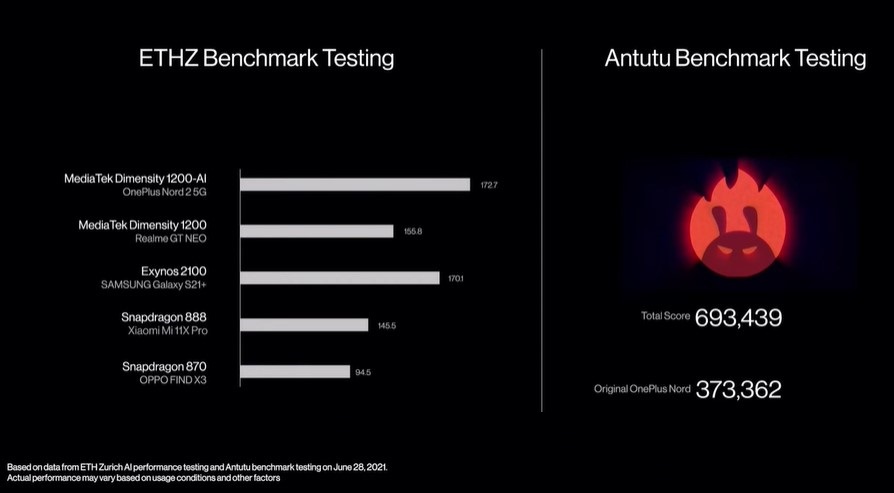
However, that isn’t to say that the Snapdragon 778G is not a good processor. It is actually very good and offers impressive performance. If you want to know how well it measures up to the Dimensity 1200, MySmartPrice has done a good comparison.
Cameras
This is one of the features that can either be a dealmaker or dealbreaker for buyers.
Motorola goes all out with a 108MP f/1.9 primary rear camera with 9-in-1 pixel binning technology. There is no optical image stabilization, which is a feature the 50MP Sony IMX766 sensor on the Nord 2 boasts of. While a camera shootout will determine which phone has the better main camera, the Nord 2 has the odds in its favor.
For the other cameras, Motorola clearly wins. It has an ultrawide angle camera with a higher resolution and can also take macro photos. Further, its third camera, an 8MP telephoto camera provides 3x optical zoom and 30x superzoom which is vastly superior to the 2MP sensor on the Nord 2.
Both phones have a 32MP front-facing camera and similar app features such as dual capture, night mode, and portrait mode.
Battery and Fast charging
The OnePlus Nord 2 not only has a bigger battery at 4500mAh but also charges significantly faster at 65W, leaving the Motorola Edge 20’s 30W TurboPower in the dust. Thankfully, both phones ship with a charger in the box.
Connectivity
The OnePlus Nord 2 has NFC, Bluetooth 5.2, Wi-Fi 6, dual SIM support, and even more 5G bands than the OnePlus 9. The Motorola Edge 20 also has NFC, Bluetooth 5.2, and dual SIM support but adds the improved Wi-Fi 6E and packs a total of 11 5G bands!
Software
Both phones run Android 11 out of the box but are significantly different. Motorola’s My UX is close to stock Android with the addition of useful features such as Attentive Display and Moto Actions. OnePlus on the other hand ships the Nord 2 with OxygenOS 11.3 which uses the integrated ColorOS codebase. There are lots of customizations available and features such as AOD, One-handed mode, Super Resolution, and an optimized Game Mode.
However, what is more important is software support. Both companies have their issues with this, but OnePlus is promising two OS upgrades for the Nord 2 and three years of security updates while Motorola, which is worse at updates, says it will provide OS upgrades and security updates for two years.
Other features
Both phones have some unique features that are also worth mentioning. The Motorola Edge 20 has Ready For, a feature that allows you to connect it to an external display and use it as a desktop computer. You can also use the phone as a webcam with movement tracking for video calls while connected to your TV or for a console-like experience to enjoy your mobile games on your TV with a connected Bluetooth controller.
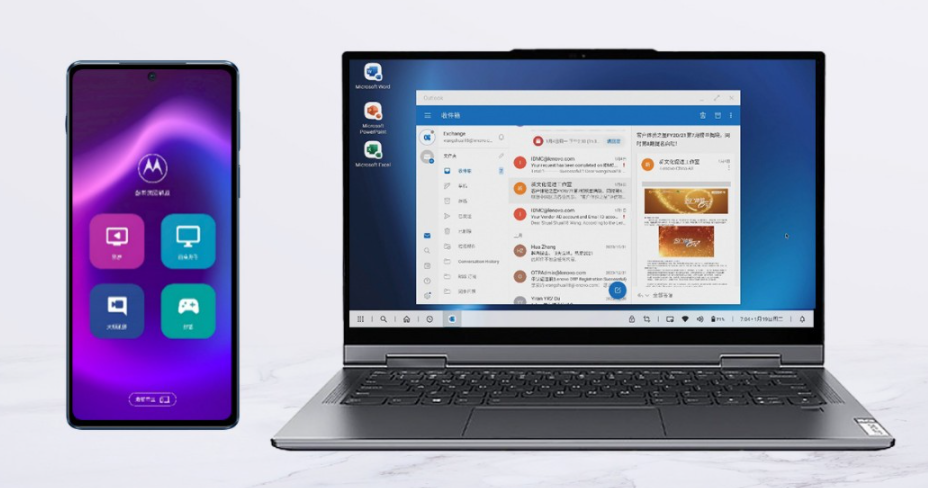
Motorola also says the Edge 20 has an IP52 rating and there is a dedicated Google Assistant button too.
The Nord 2 has stereo speakers with custom Dirac drivers for an improved audio experience. OnePlus also brags about the new Haptics 2.0 which it claims is significantly improved. There is also an Alert Slider for easily switching between ring modes.
Conclusion
OnePlus and Motorola have made pretty impressive phones with outstanding features. However, there are significant differences that will determine the one you buy.
If you prefer a phone that is lightweight and slim, boasts the best-in-class display, packs all-around better cameras, offers a near-stock Android experience, and moonlights as a desktop computer, then the Motorola Edge 20 is the device for you. Let’s also not forget that with its 11 5G bands, there is no reason to worry about supported bands. However, Motorola’s poor attitude to software updates is something you should keep at the back of your mind.
For those who want performance, a great primary rear camera in its class, longer battery life, incredible fast charging, better speakers, and more reliable software support that will end in 2024, the OnePlus Nord 2 is the device for you.
Which one of these two phones do you prefer? Do let us know in the comment box.
RELATED:

